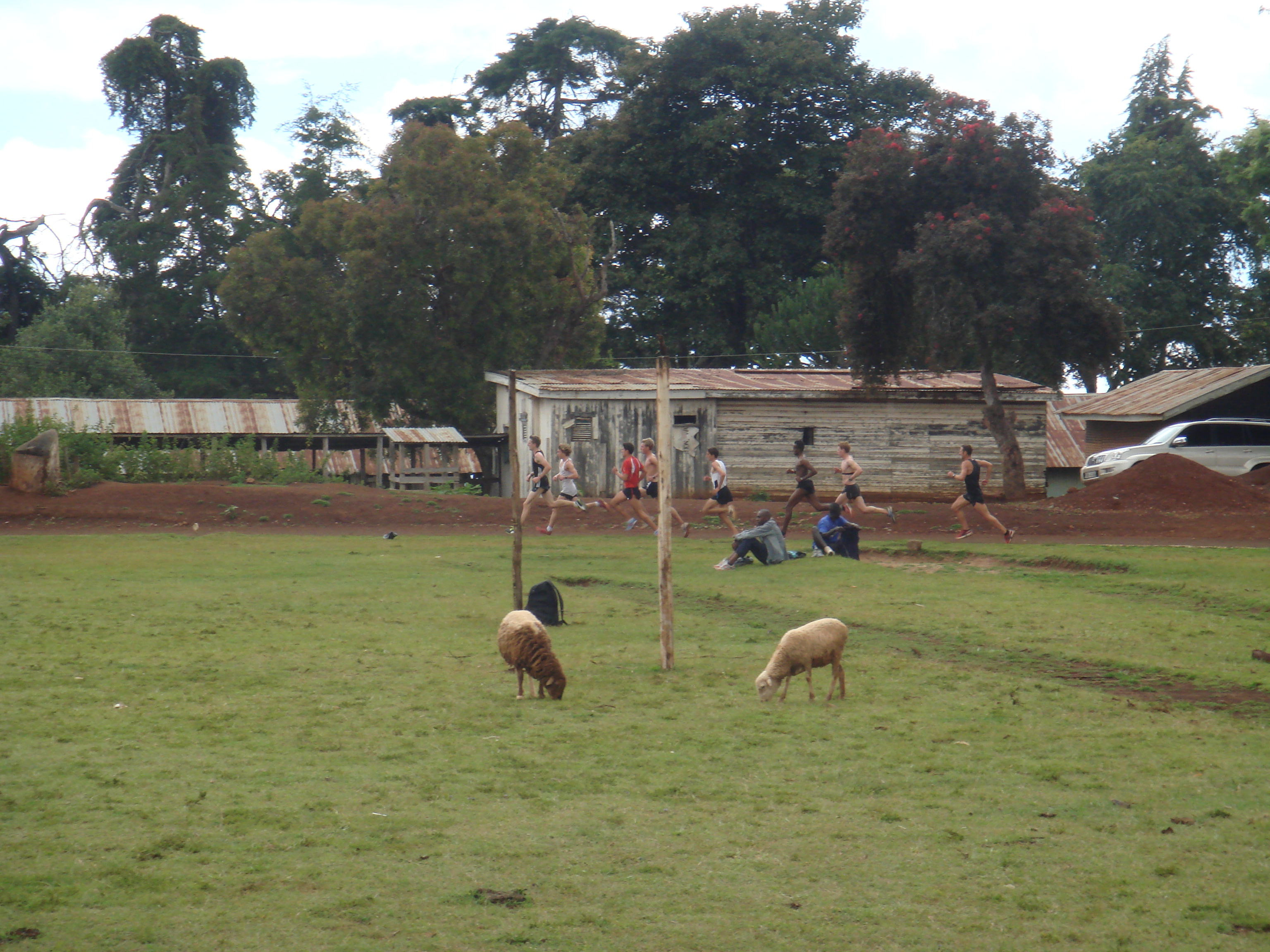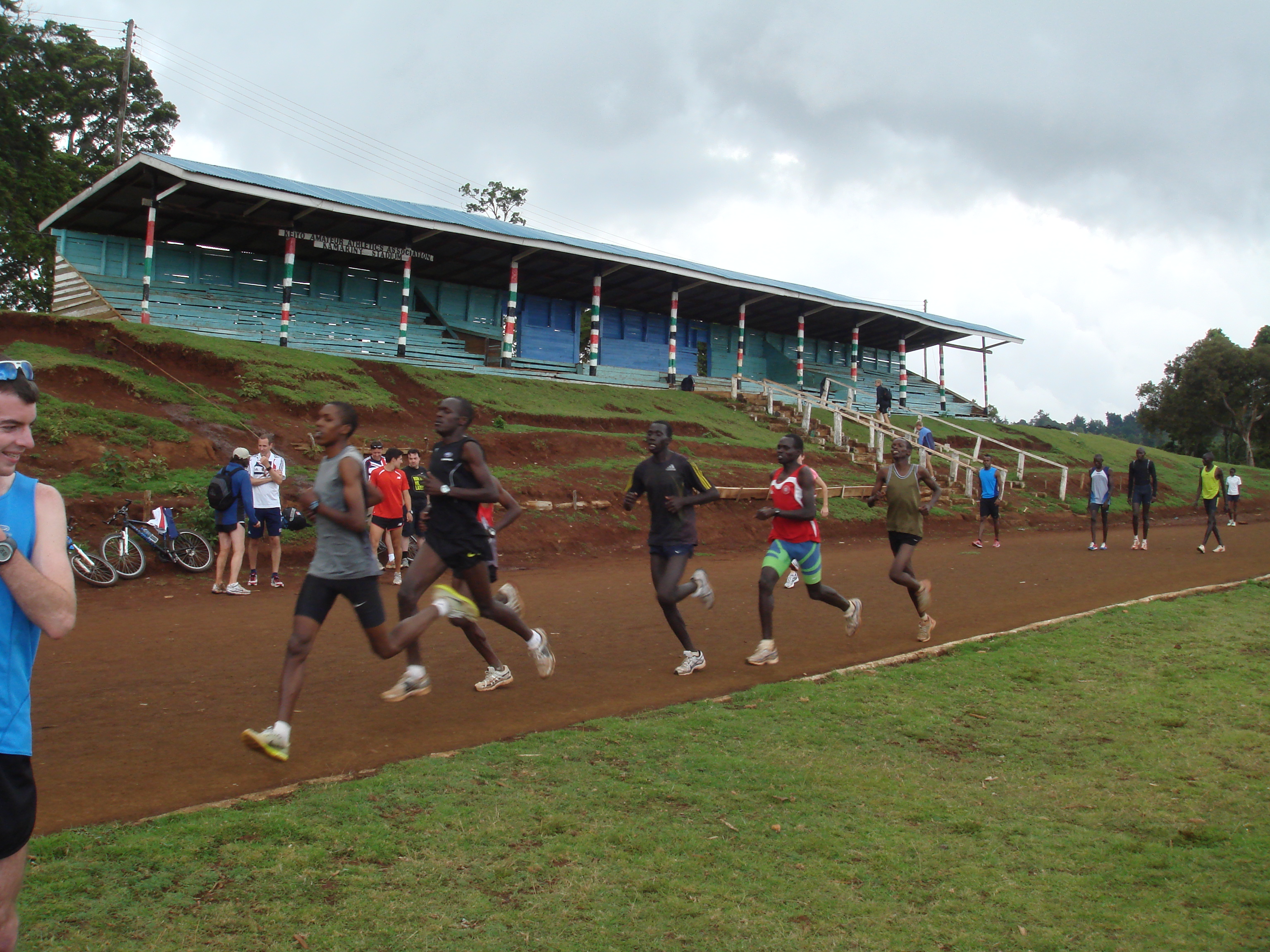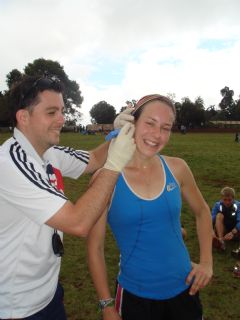Tuesday is session day! After a slightly later start, the athletic collective assembled under the threatening storm clouds & made our way to the Iten track. & what a venue the Iten track is…perched on the side of the Rift Valley, decorated with grazing sheep & goats, with a stand that would never stand a chance of passing even the most generous of health & safety standards in Europe. I loved it…it reminded me of my boxing gym in Edinburgh, in that this is a place where work happens. No frills, no razzamatazz, no glamour but the bare necessities provided in a raw interpretation & furnished with serious, hard working athletes, strictly no poseurs allowed.
Whilst the athletes conducted their drills for the session Mick had planned, Hatti (Dean) & Steph (Twell) joined the fray, flanked by Mick aboard his bike, all splattered in clay red mud & fresh from their trail session. Meanwhile, Barry set his tools to work getting baseline lactate levels on 6 or 7 of the athletes that were looking to monitor their adaptation to the altitude so far.
Barry (pictured above taking a blood for a lactate measurement from Steph Twell) explained what he looks for with regards the lactate values for endurance athletes in the altitude training camps to the athletes:
“For endurance athletes training at altitude in the first week, it is actually a certain elevation of lactate values that you are looking for when completing an interval session (today was up to 15 times 400m with 90 second recoveries).
Blunted lactate levels for the type of session undertaken today (i.e. less than approx. 3-4mM) indicate an athlete that is unable to provide the energy to satisfy the training demand due to a glycogen deficiency. It is normally characterised by unexplained & premature fatigue during the session & may be reflective of a number of factors, most notably an inability to eat enough carbohydrate &/or inadequate recovery between sessions.
Alternatively levels above around 10-12mM indicate an extremely strenuous demand on the system, above what is expected for the same relative session at sea level.
If the lactate level is too low or high it normally requires a change in session & the subsequent demands directed by the coach (by manipulating volume, intensity etc). This is a key tool for monitoring training readiness but it can also be used for monitoring where the athlete is in their training programme relative to previous measures.”
The good news for all our guys today was that their lactate levels were in the target ranges identified by Barry.
After all the day's hard work & with storms rumbling around us, everyone is now getting ready to congregate in the lounge for a three-team Question of Sport quiz, with Andy Baddeley playing the Sue Barker role…so, brains to the fore & fingers crossed for some favourable questions!!!



